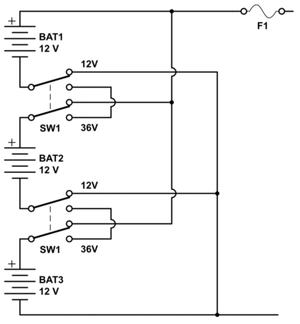Truant officers in Boston are testing a new system that shows how mobile applications are supposed to work.
Elliot Feldman, director of alternative education for Boston Public Schools, has no illusions about his job. Among other duties, he oversees the school system’s truant officers and meets with every unofficially absent student they pull off the streets. “I deal with the underbelly,” Feldman says. “I’ve seen kids involved in every crime — murder, rape, assault, you name it.” In other words, his job is right out of the TV show Boston Public (only without the melodramatic musical score).
The problem is, each of Feldman’s truant officers has to carry around a 5-inch-thick printout that lists every one of Boston’s 63,000 public school students, along with their class schedules, parents’ phone numbers, and absenteeism records. “If you’ve got a document that’s about the thickness of three phone books, on a windy, rainy day, it’s unwieldy,” Feldman says. That’s one reason his truant officers are so excited about a new mobile application that will let them look up student records using cell phones.
The application, currently in field trials, lets truant officers enter a student’s ID number to get up-to-date information directly from the school system’s database. (Officers get the ID numbers by asking students or by looking at student ID cards; they can also enter just the student’s name if necessary.) Phones are password-protected, and they automatically shut off access to the system after a few minutes of inactivity — so if one falls into the wrong hands, it can’t be used to get information from the database.
This is a classic application of mobile technology: replacing dated, unwieldy printed information with up-to-the-second wireless data. When the system is fully deployed this fall, the program will make truant officers’ lives considerably easier — while also making school-skipping students’ lives that much harder.
The application was built by AirClic, based in Blue Bell, Pa., using its “SmartCode” technology. SmartCodes are based on a simple but elegant idea: With mobile devices, it’s easier to use numeric codes to trigger specific actions than it is to enter alphabetical data one letter at a time. When those numeric codes are coupled with specific information about the person entering them, you can develop some pretty sophisticated mobile applications.
For example, a pharmaceutical company might interpret a product ID code for a given drug three different ways, depending on who enters it. A drug company rep could type in the code, meaning she just left a sample with a doctor. If a pharmacist enters the same code, the application could recognize it as a reorder request and respond accordingly. If a consumer enters the number, the system could beam information about the drug to the customer’s cell phone.
AirClic’s approach is clever, because from the point of view of software designers, mobile phones suffer from a major interface impediment: their size. No matter how smart the phone, you can fit only so many buttons into a couple of square inches. That means it’s difficult to type data into cell phones — severely limiting the kinds of interactivity that mobile applications can offer. Companies that want to build mobile applications will be limited to the 12-key cell-phone interface for the foreseeable future. So why not get used to the idea and build applications that work better in that environment?
The beauty of the SmartCode scheme is that numeric codes are everywhere, from UPC codes on retail products to employee ID numbers to zip codes. According to Lewis Taffer, AirClic’s general manager for North America, SmartCodes will work not just on mobile phones but also on handheld devices like Palms and iPaqs; you can enter SmartCodes by typing, by pressing keys, or even by speaking the numbers into a phone. Add a clip-on bar-code scanner to a mobile phone (AirClic sells one for $150) and you can scan the codes without pressing any keys at all. Don’t expect consumers to start scanning bar codes anytime soon — the scanners are too expensive, and there’s no pressing need for them. But the combination of cell-phone and bar-code-scanning technologies is well-suited to a variety of industrial applications, such as manufacturing or shipping, where physical objects need to be tracked in real time.
The Boston schools’ use of the technology shows how mobile applications can work. The key is to focus on simplifying specific, repetitive tasks and provide an easy means of data entry. It also helps that the Boston application is aimed at a narrow audience with well-defined information needs. Browsing for random bits of information on the wireless Web is a nonstarter — it’s much better for mobile applications to focus on answering particular questions, like “Where is this student supposed to be right now?” and “How can I call his or her parents?”
Meanwhile, Boston’s Feldman says, his truant officers are delighted by their new mobile application. “They’re like kids in a candy store — this technology makes their life infinitely easier,” he says. Let’s hope future mobile applications do more of the same.
Link: Information You Need, Almost Anywhere
Link broken? Try the Wayback Machine.

